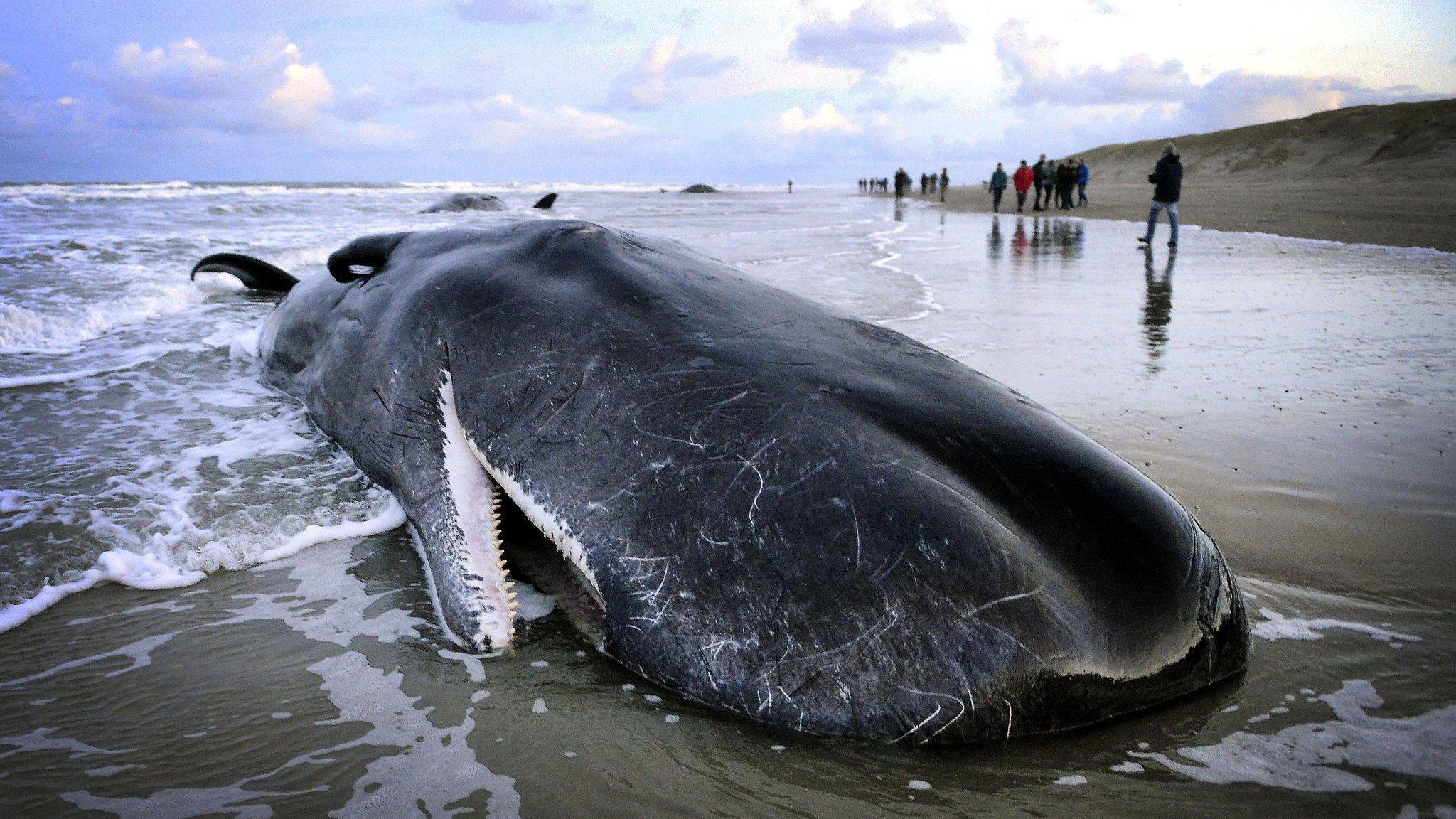CEFAS scientists create first UK map of shipping 'noise'
- Published
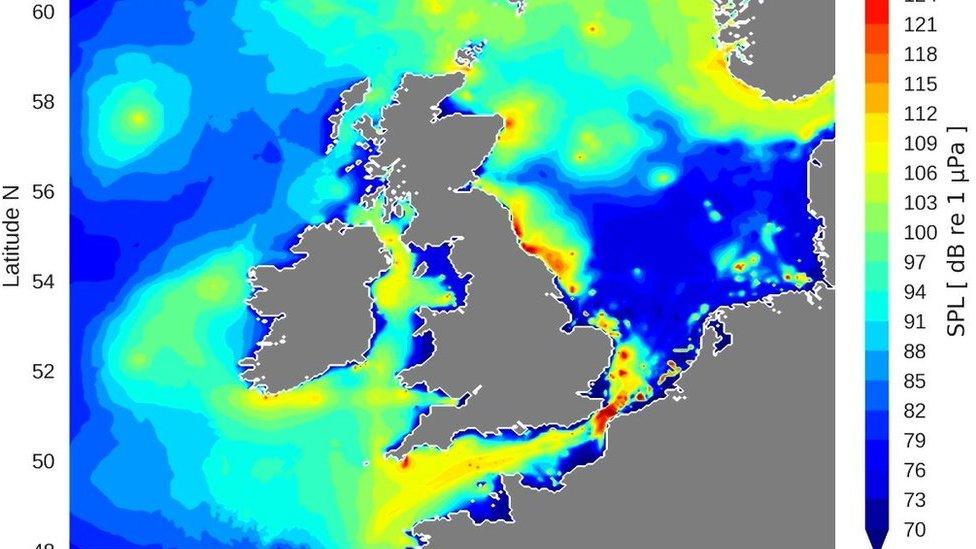
Thousands of hours of underwater noise of ships travelling the UK seas have been recorded
The first UK-wide map of underwater noise made by ships has been created, marine scientists have said.
Researchers from the Centre for Environment, Fisheries and Aquaculture Science (Cefas) in Suffolk used data captured from microphones placed on the seabed to identify "hotspots".
Dr Nathan Merchant, from Cefas, said he was "concerned" about potential effects on how marine mammals "communicate".
The shipping industry said it took its responsibilities to nature "seriously".
Over 18 months, microphones were placed around the UK and recorded audio for three months at each location.
Ships' propellers were the most widespread cause of underwater noise, the study found.
The loudest areas were busy shipping lanes like the Strait of Dover, while routes to Felixstowe, the second busiest container port in Europe, were likened to a motorway.
Cefas said it was the first time shipping noise had been mapped for the whole of the UK, and also the first time those maps had been corroborated with field measurements.
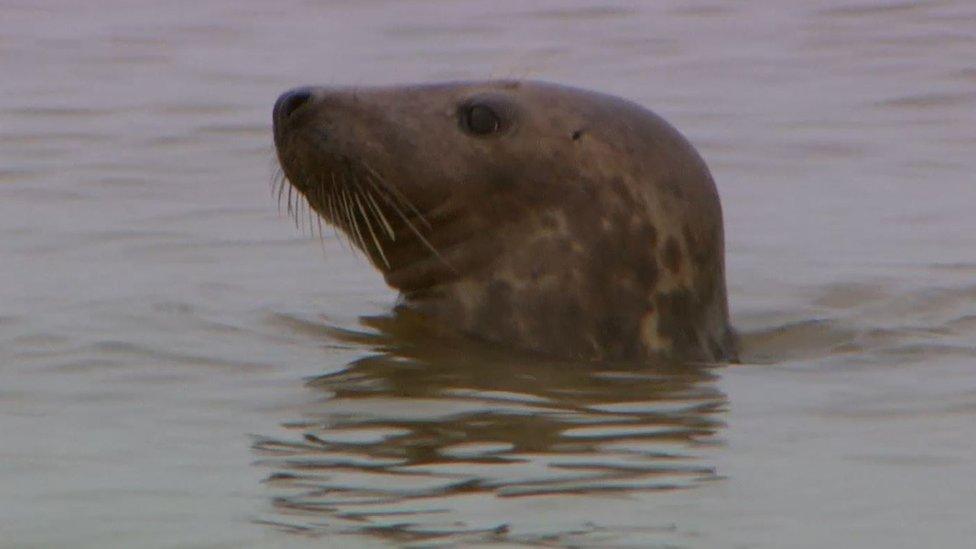
Scientists are concerned about the effect of underwater noise on marine life such as seals, dolphins and whales
Researchers said noise travelled further underwater, and it was likely marine mammals could hear ships many kilometres away.
Dr Merchant, who is based in Lowestoft, said: "The kind of effects we're concerned about are things like masking, which is where noise might get in the way of communication signals that marine mammals and fish use underwater.
"Whales can communicate over large distances and there's evidence that shipping noise can interfere with that, and that whales have had to change the way that they call, so calling louder, calling at different frequencies.
"This can affect how much energy they have to communicate, and how far they can communicate and this is something we're concerned about."

Dr Nathan Merchant of CEFAS wants more research to look at which mammals are being affected most by underwater noise
Studies in the USA have shown changes in communication frequency among whales over several decades.
When comparing contemporary recordings of the North Atlantic Right Whale to measurements made by the Woods Hole Oceanographic Institution, external in the 1950s, Syracuse University, external discovered whales now communicated at a much higher pitch in comparison.
Scientists have attributed the change to increases in low-frequency shipping noise, with whales adjusting their pitch to make themselves heard.
'Health effects'
CEFAS is also trying to understand whether mammals are avoiding areas with a lot of noise.
"We know that chronic stress in humans for example can have long term health effects, and we're concerned for the same reasons in long term health effects in seals and other marine mammals," Dr Merchant said.
The noise monitoring programme will now be looking at which species of marine life are affected most in the shipping noise hotspots.
A study of harbour seals in The Wash by St Andrew's University in 2016, external found seals moved away from their feeding ground while a wind farm was constructed, but returned afterwards.
"I think there are reasons to be concerned, We need to do more to understand just how significant it is," said Mr Merchant.
Jonathan Roberts, from the UK Chamber of Shipping, welcomed the Cefas research, but said "energy design and operational energy efficiency measures" had already cut underwater noise.
"The shipping industry takes its responsibilities to the natural world seriously and discussions on its impact on mammal communication are being held at the International Maritime Organisation - the UN body that regulates global shipping," he added.
You can see more on this story on Inside Out on BBC One in the East of England at 19:30 GMT on Monday, 4 March, and afterwards on the BBC iPlayer.
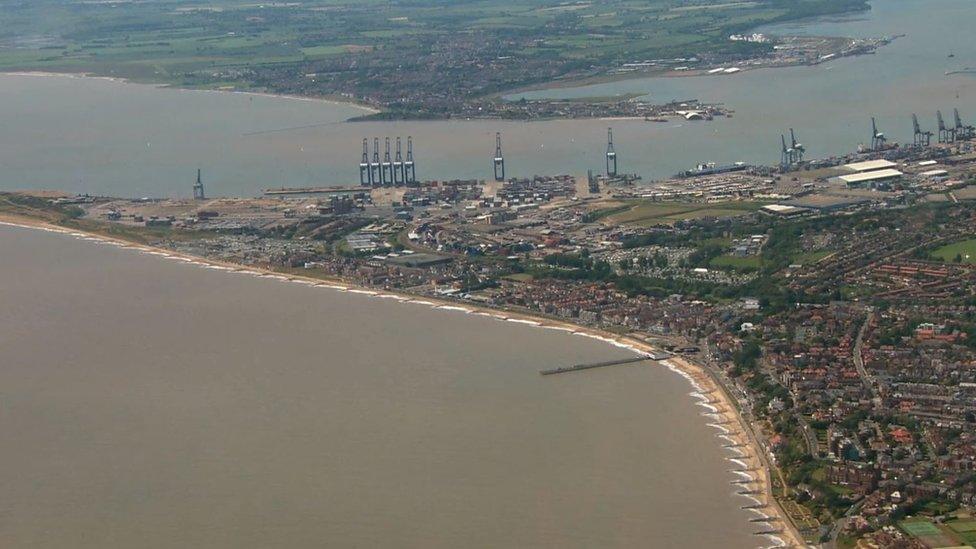
The shipping routes in and out of Felixstowe port have been likened to a motorway
- Published24 May 2017
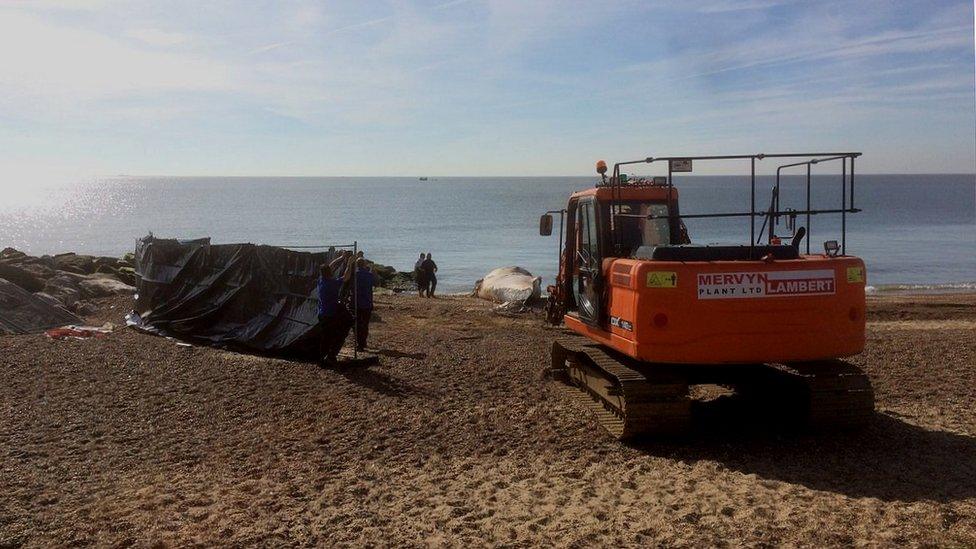
- Published4 February 2016
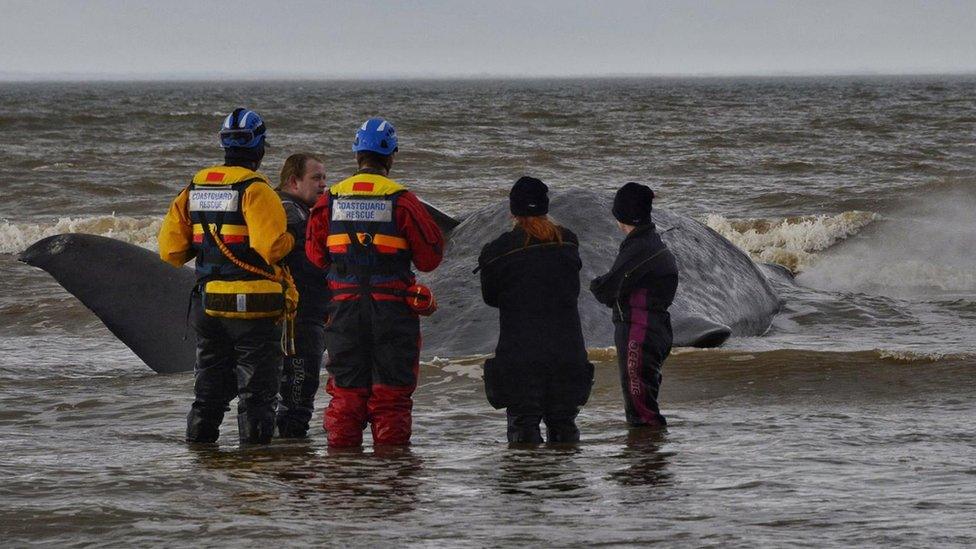
- Published25 January 2016
